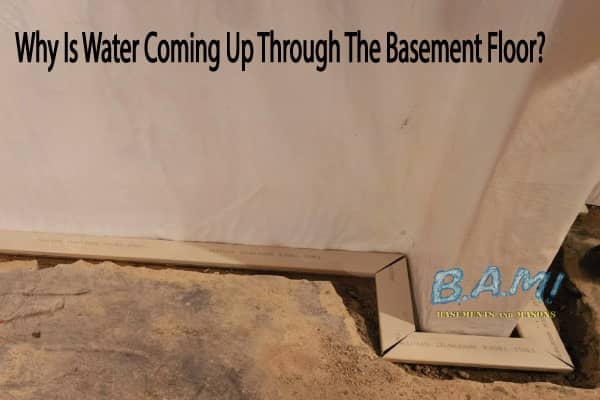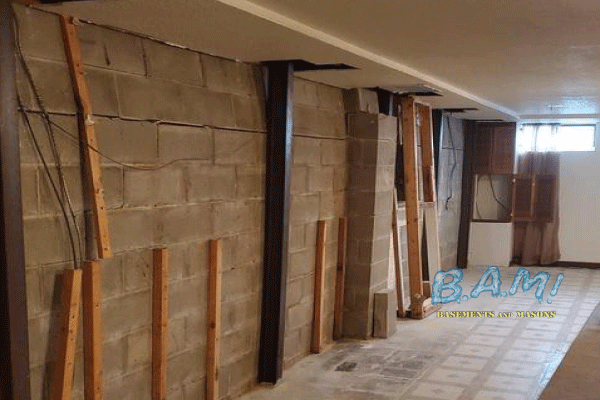All about Best Basement Waterproofing
All about Best Basement Waterproofing
Blog Article
The Single Strategy To Use For Best Basement Waterproofing
Table of ContentsAll About Best Basement WaterproofingWhat Does Best Basement Waterproofing Mean?Rumored Buzz on Best Basement WaterproofingThe Buzz on Best Basement WaterproofingIndicators on Best Basement Waterproofing You Should Know
AdvantaClean's trained experts and professionals will locate the water resource. If wall surface or slab cracks are present, we will inject polyurethane and epoxies into the fractures and secure the concession, protecting against further moisture from entering.
If there's condensation on the outside of the foil, you have high moisture in your basement. Repair it with a portable area dehumidifier or a whole-house humidifier system rather of waterproofing items. If the aluminum foil has condensation on the inside surface (beside the wall surface), the dirt around your home may be normally damp from a high water table or inadequate dirt water drainage.
You can waterproof simply your interior walls, which might resolve the trouble. Once they dry, they adhere completely to concrete and masonry walls.
Best Basement Waterproofing Fundamentals Explained
Swirl the brush at the last of application to provide the wall surface an eye-catching, completed look. Concrete water resistant coatings can not be put on previously repainted surfaces; examine the tag. A 5-gallon pail prices about $60. Also referred to as densifiers, they are ideal only for walls that haven't been repainted or sealed.
You comb, roll, or spray it on a lot even more thickly one gallon covers just 75 square feet, not the 300 square feet typical with standard paint. Waterproof paint is fine for DIY application. You can use it over repainted surfaces, and paint over it once it's cured (one gallon costs $37).
It can cost $10,000 to $15,000, depending on the job needed. Exterior waterproofing entails digging deep into all around the house to the full depth of the structure walls, then setting up a water-proof finish or membrane covered by drain panels.
A basement without waterproofing is kind of like that. Your cellar does not want to go with a downpour without appropriate defense simply as much as you don't want to.
The Basic Principles Of Best Basement Waterproofing
However if you've done your research study, you would certainly recognize there are 2 kinds of waterproofing: exterior and interior. It can obtain perplexing what they both mean, which one's a much better financial investment, and what will really maintain the water out. Do not fret, we created this blog site to quickly specify both methods for you and review the advantages and disadvantages of each.
Outside waterproofing is a waterproofing technique that includes sealing your home from the exterior. The foundation walls are after that cleaned up, sealed, and covered with a water-proof membrane layer or sealant.

The Best Basement Waterproofing Diaries
It's a much more engaged procedure that requires digging up your lawn, which is pricey and lengthy. Outside waterproofing involves eliminating everything surrounding your house, consisting of porches, driveways, pathways, landscape design, air conditioner units, decks, and so on. If any of the job see this page was done incorrectly and water is still entering your basement, there isn't much you can do to remedy or fix it.
Interior basement waterproofing includes waterproofing from the inside. Any water that leaks right into your cellar is rerouted prior to it touches your flooring. It's sort of like putting on a raincoat under your clothes. It involves two things: a water drainage track and a sump pump. It works by sealing the within your basement walls and floors so water that tries to enter is funnelled out through a sump pump.
It's an efficient approach to waterproof your basement - Best Basement Waterproofing. The disadvantage of indoor cellar waterproofing mostly concerns the installation process. This technique calls for stored products, furniture, and integrated shelving or cabinets to be moved from touching the basement wall surfaces. And throughout installation, your news cellar can not be utilized. The most significant difference between the 2 approaches is this: Outside waterproofing is a preventative option and indoor waterproofing is a restorative service.
The Best Basement Waterproofing Ideas
In final thought, outside and indoor basement waterproofing are both reliable methods of protecting your home from water damages. Outside waterproofing develops an obstacle that stops water from entering your home, while indoor waterproofing redirects water that does enter your home. And it is very important to note that exterior waterproofing is a pricey and turbulent setup procedure when contrasted to indoor waterproofing.
Whichever method you select, make sure you choose a reliable and trustworthy specialist for the task. If you have any kind of inquiries regarding basement waterproofing, please get to out to us.
You can fill in our form right here, begin a chat in the lower right-hand edge, or call us at 1-800-827-0702.
Report this page